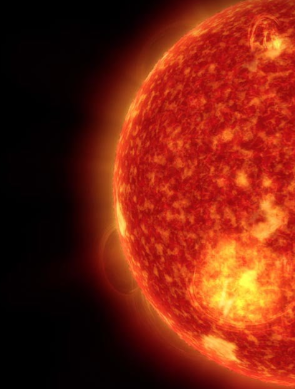Huge Solar Storms Could Have Kickstarted Life on Earth

We all know that the Sun’s heat and light is necessary for our day-to-day existence on Earth. But data gathered by NASA’s Kepler space observatory also indicates that four billion years ago, the sun may actually have stimulated the beginnings of life itself.
In a recent article in the journal Nature Geoscience, researchers reported using Kepler to study “superflares” — enormous explosions that frequently occur on the surfaces of young stars. Some of those stars produced as many as 10 massive eruptions per day.
According to the scientists, those stars are similar to the sun’s state about four billion years ago. But while the sun was indeed volatile, its average output of energy back then was only about 70 percent of what it is now.
“That means Earth should have been an icy ball,” Vladimir Airapetian, lead author of the article and a solar scientist at NASA’s Goddard Space Flight Center in Greenbelt, Maryland, explained in a press release. “Instead, geological evidence says it was a warm globe with liquid water.”
The scientists call that the Faint Young Sun Paradox, as the NASA video above details. But the Kepler data pointed them to an explanation for it: “Solar storms could have been central to warming Earth,” said Airapetian.
Back then, the young Earth had a weaker magnetic field, the scientists say. That enabled the solar storms’ radiation to pack a more powerful punch.
As the charged particles from the solar flares traveled down the magnetic field lines, they would have slammed into abundant nitrogen molecules in the atmosphere, said Airapetian. That, in turn, would have started a chain of collisions that resulted in the creation of large amounts of nitrous oxide, a greenhouse gas some 300 times more potent than carbon dioxide. And that would have enabled the Earth’s atmosphere to trap more of the Sun’s energy and warm up … eventually leading to our existence today.
Full Width
An image of a coronal mass ejection (CME) from 2012 that took four days to reach Earth’s magnetic field, causing aurorae in the atmosphere; an image of Earth was inserted to show scale.
NASA/GSFC/SDO
The scientists also think that the early bursts of solar radiation may have caused chemical reactions that led to the formation of RNA and DNA, which cells use to carry the genetic information needed to sustain life.



 Creators of mankind
Creators of mankind Description of “Tall white aliens”
Description of “Tall white aliens” Where they came from?
Where they came from? About hostile civilizations
About hostile civilizations The war for the Earth
The war for the Earth “Tall white aliens” about eternal life
“Tall white aliens” about eternal life Video: “Nordic aliens”
Video: “Nordic aliens” Aliens
Aliens Alien encounters
Alien encounters The aliens base
The aliens base UFO
UFO Technology UFO
Technology UFO Underground civilization
Underground civilization Ancient alien artifacts
Ancient alien artifacts Military and UFO
Military and UFO Mysteries and hypotheses
Mysteries and hypotheses Scientific facts
Scientific facts


















